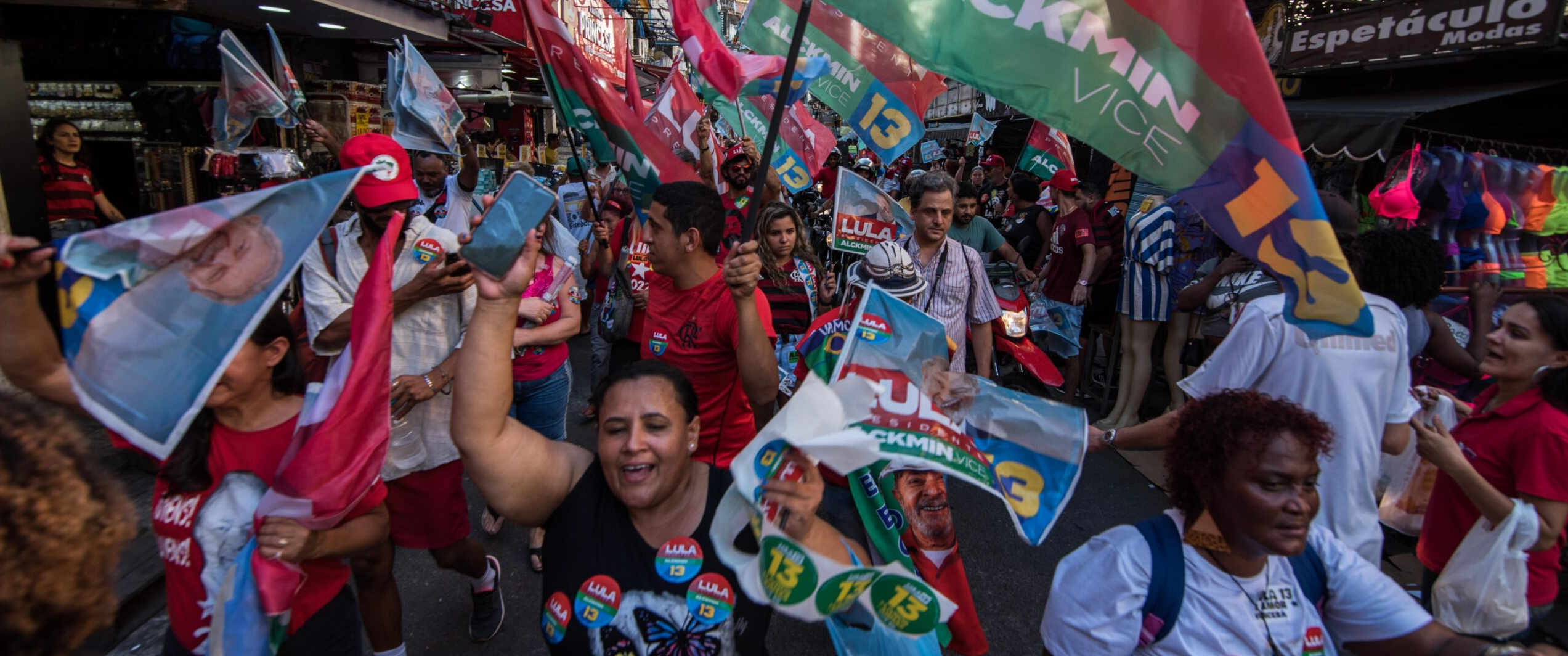
This is the latest contribution to our media watchdog series Best and Worst International Reporting on Rio’s Favelas, part of RioOnWatch’s ongoing conversation on the media narrative and portrayal of favelas.
Introduction to the 2022 Edition
2022 was a year full of complexities, both in the national and international spheres. After two years of a pandemic which continues to yield a high number of cases, Brazil started the year struggling against a new variant of the coronavirus, Omicron, characterized by an extremely high infection rate. As has happened since the beginning of this global emergency, favela organizations were the main actors responding to and confronting the illness and its consequences in their territories—something which hasn’t changed since 2020.
The year was unparalleled in that, on top of the pandemic and chronic government neglect, Brazil also experienced intense political polarization and a tense and violent election cycle. During this period, international headlines about favelas returned somewhat to a “historical norm.” This means that coverage was often biased, reactive, problematic and offensive about these areas, though there were also interesting articles (and other types of content) with novel reporting about favelas and their residents.
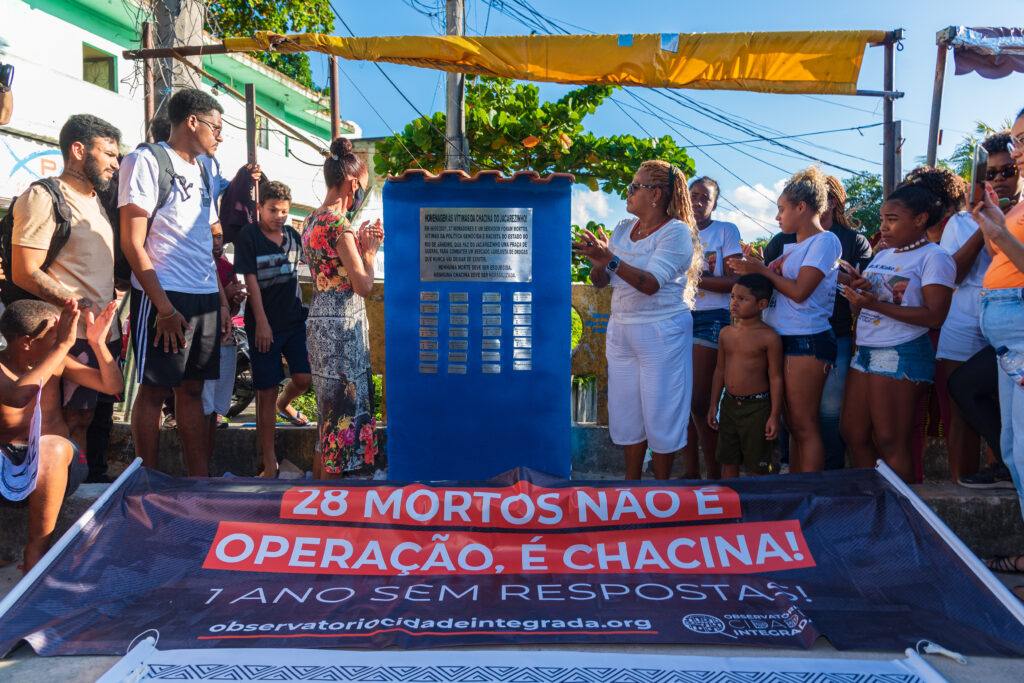
In this context, favela-based community journalism retains its historic duty of bringing visibility to specific, daily concerns—such as the return of hunger, necropolitics, the rise in costs of cooking gas and basic food items—as well as medium and long-term issues that are easily forgotten in day-to-day life, like climate change, collective memory, ancestry, and climate justice.
And yet these subjects rarely appear in the international media, even though these media outlets are increasingly aware of how to approach the favelas, their residents, and their solutions—not just focusing on relaying the problems.
Given the international media’s influence on public opinion worldwide, biased and inaccurate reporting on favelas is a real problem, however small the inaccuracies may be. Despite some progress, this influence means it’s always necessary to reinforce the need for a paradigm shift. Public policies here in Rio are typically fueled by public opinion rather than reality on the ground. This makes it essential for information about the favelas to be considered, produced, and debated by residents themselves and also by people outside the favela in dialogue with residents.
As has been covered by RioOnWatch, there are numerous benefits to solutions journalism that is rigorous, based on evidence that offers hope, and responding to real problems with innovative ideas. This positive, proactive approach complements the role of making demands to the authorities, to those who must respond to the public via a free press. Journalism should give us hope, not fear.
From the Pandemic to the Return to Traditional Coverage: Best and Worst International Reporting on Favelas in 2022
At the start of the year Spiegel International published an article in English which presented an interesting picture of how favela youth are going places. Except that instead of this place being in the real world, it’s in the virtual one. Though Internet access in favelas is notoriously unstable and of low-quality, Agence France Presse (AFP) shortly thereafter published an article about the gaming scene in favelas. The report exposes the limitations on Afro-Brazilians participating in digital environments in Brazil.
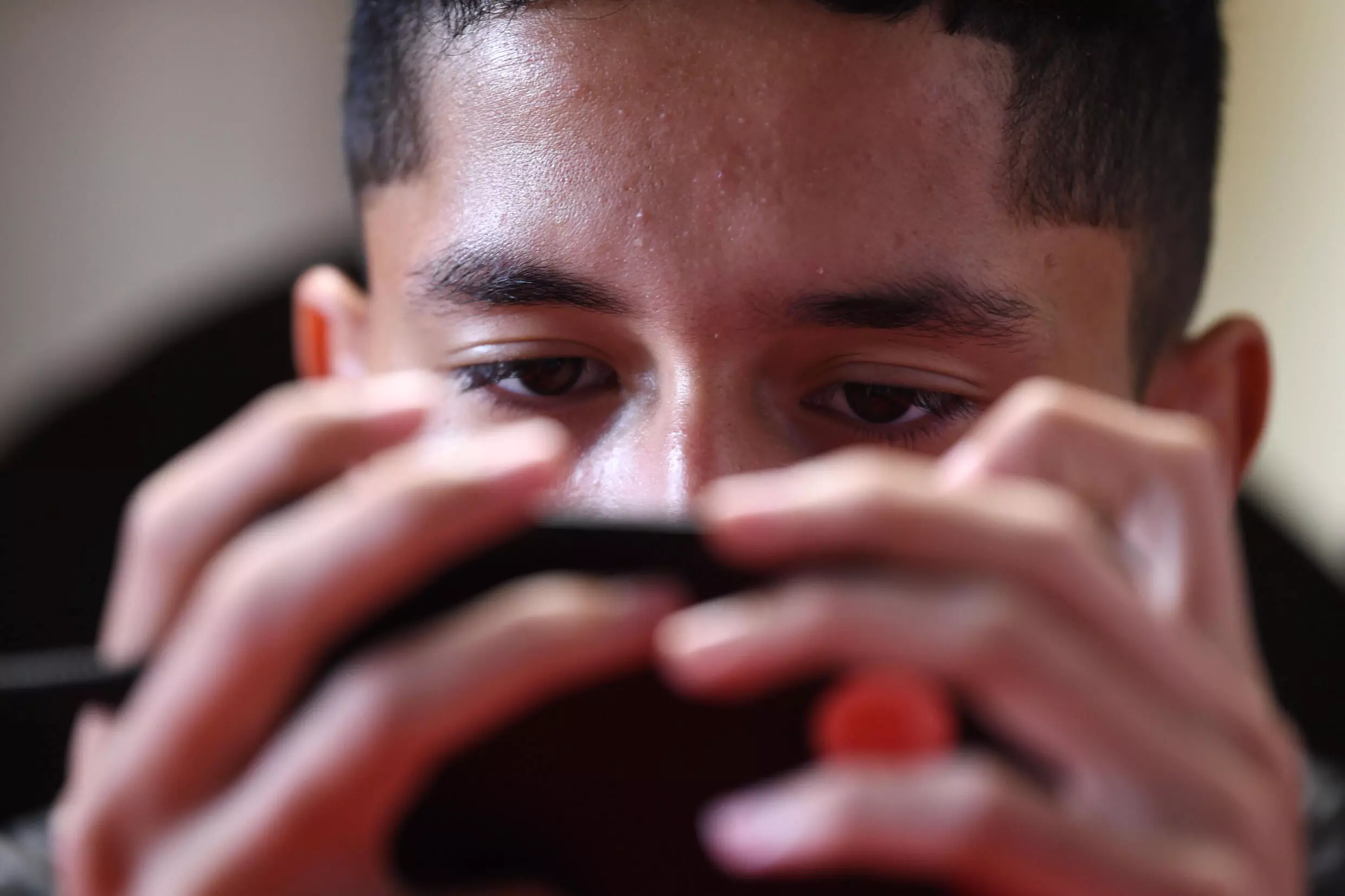
Unfortunately, we continue to see the use of the stigmatizing term “slum”—even in Global Citizen. The outdated term refers to incipient, precarious settlements whose residents seek dignified resettlement and does not accurately reflect today’s consolidated Brazilian favelas which typically strive for full development and permanence on their lands. The inaccurate, stigmatizing and counter-productive translation was found on the sites Impact Alpha, Start Ups and Forbes. RioOnWatch has been calling attention to this harmful and lazy error for over a decade.
An interesting video-report by Deutsche Welle at the start of 2022 linked the prevalence of technology and the Internet in the favelas with the economy. The report came following a series of articles in other media outlets at the end of 2021 and spoke of the favela delivery service Favela Brasil XPress, in the context of growing online shopping during the pandemic.
Public Insecurity, Massacres, and the Integrated City Program
In January, Rio saw the inauguration of a new public security program. Eight months after the Jacarezinho Massacre which was promptly defended by Governor Cláudio Castro, on January 19, 2022, at 5am, the favelas witnessed the start of a new cycle of questionable public policies as the Integrated City Program was established in Jacarezinho and Muzema. Fear once again roamed the streets and alleyways of Jacarezinho, summed up in ninja masks hiding faces and police holding rifles.
International media outlets reacted to the operation and its death toll with—generally critical—expert analyses. Foreign news agencies such as the Associated Press (AP), Reuters, and AFP were the outlets which most reported on these events in the international media. The coverage was essentially reactive with few propositional or explanatory reports.
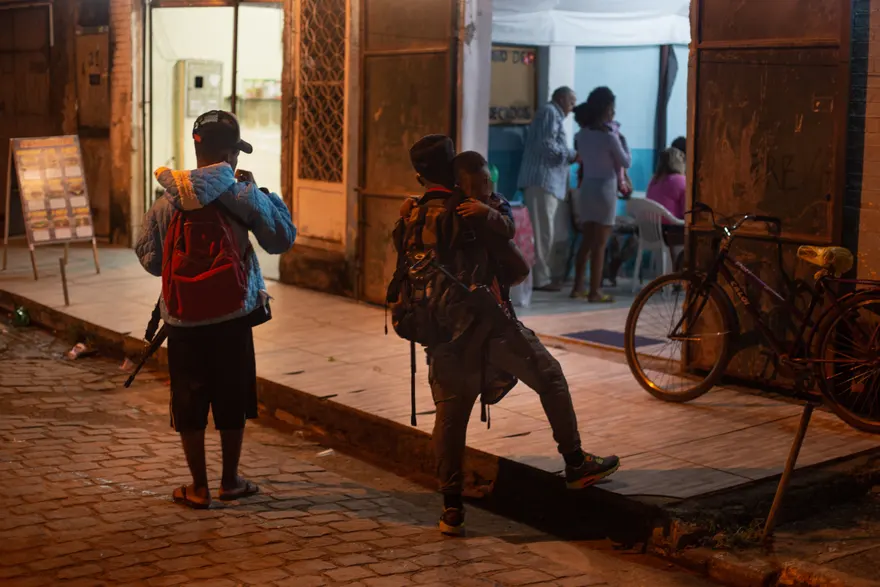
Insight Crime, on the other hand, combined journalism with critical analysis, as did Tom Philips in The Guardian in this article which contextualized the trend of merging Christian faith with drug trafficking.
The massacres of 2022 represented an entirely backwards trend, being repeated several times over the year. A few weeks after the launch of the Integrated City Program, a new police operation culminated in a massacre which left eight dead in Vila Cruzeiro. As reported by the Associated Press, some were killed at the hands of Federal Highway Police (PRF) officers, which is fairly uncommon in the history of operations in Rio’s favelas and is legally questionable since the Complexo da Penha favelas are kilometers from federal highways that fall under PRF jurisdiction.
Some months later, Insight Crime published a provocative report asking why the PRF, which took part in this operation, had killed more people in 2022 than its historical average. The massacres were repeated in May in Vila Cruzeiro, according to an AP news report, and in July in Complexo do Alemão, as reported here by Reuters. However, no foreign reporting followed up on the issue beyond the obvious, except for an article in The Washington Post which didn’t spare the Brazilian police forces from being identified as one of the most lethal in the world.
One of the few articles that described in full the panorama of violence and dysfunction in fundamental rights was by AFP who published a thought-provoking report marking one year since the sad milestone of the largest massacre in the history of Rio de Janeiro’s Military Police, with the deaths of 28 people in Jacarezinho. Insight Crime also wrote about the escalation of violence in the favelas, making it clear that these operations only increase the number of corpses and have no positive impacts in public security conditions in the city.
The Favelas Fight for Climate Justice

Articles that spoke about climate in favelas were in general interesting, though a number were also reactive.
One of the few that focused on the enormous vulnerability of these territories in the face of climate change was a report in The Washington Post about the landslides which took place in a favela in Petrópolis leaving 240 people dead. In it, Terrence McCoy carefully analyzes the lack of adequate housing that has plagued Brazil for over a hundred years, the occupation of hills across the entire country as a viable alternative for a huge portion of the population and the precarious position that residents find themselves in today. With no housing options in areas less susceptible to increasingly violent rains and flooding, McCoy describes the situation in favelas across Brazil as a ticking time bomb.
In the case of Petrópolis, the 2017 Municipal Plan for Risk Reduction—developed in the wake of the 2011 tragedy—had already identified over 27,000 houses constructed in high or very high risk areas for landslides and flooding. In this respect, the Financial Times by way of editor Bryan Harris outlined the issue focusing on how past corruption affects the present and future of areas like favelas which, in general, are zones of impact and very sensitive to climate change.
One of the occasions in which international media gave ample coverage to an event in a favela in a constructive way, focusing on the solutions generated in these territories, was for the launching of the sewage treatment bio-system* in the small community of Vale Encantado, in Alto da Boa Vista in Rio de Janeiro. Rosie Thornton in the Latin America Bureau (LAB) and David Biller in AP described the community’s initiative as a step towards environmental sustainability. CGTN America, an English-language Chinese TV network, also published about Vale Encantado as the favela with the cleanest sewage in Rio de Janeiro. Lucrecia Franco, from CGTN, interviewed and followed the residents responsible for the project around the community.
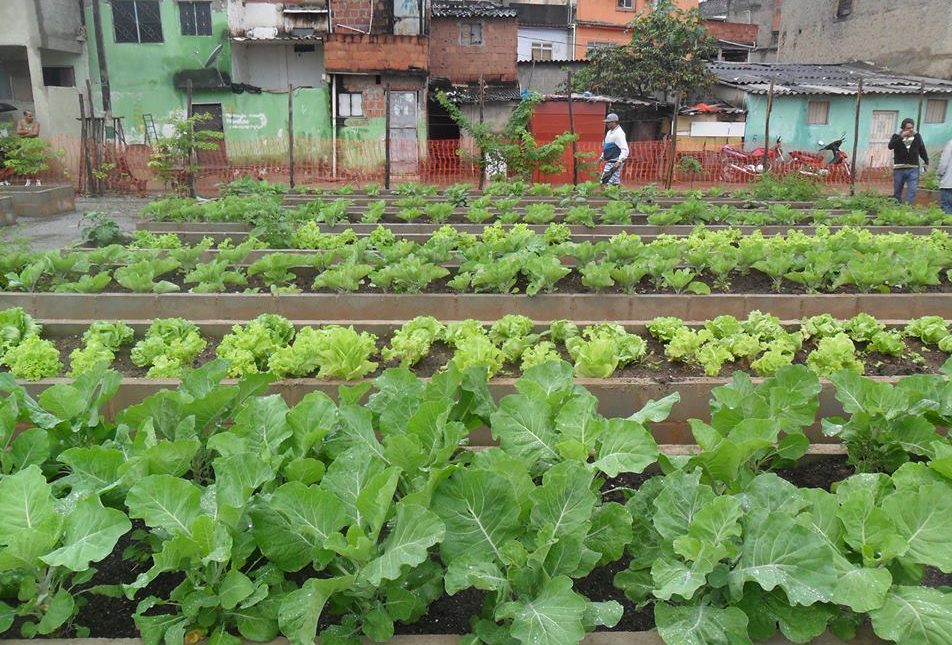
An example of how stereotypical approaches contrast with perspectives which respect local voices can be found in two articles from 2022 about the Manguinhos Community Garden, considered the largest in Latin America. The AFP report on the subject opens by creating an image of the garden contrasted with armed youth, in the middle of a “slum” ravaged by the drug trade. That is to say, it reinforces negative stereotypes relating to the favela, disproportionally emphasizing the role of the drug traffic in the community and being simply unnecessary when covering the biggest community garden in Latin America. The simple choice of this narrative path is problematic, according to community residents and journalists.
The reporter Olivia Bizot for France24, on the other hand, approached the same topic opening her article talking about how many people the garden feeds and mentions violence in a respectful way. She also contextualizes the subject based on the accounts of residents and local experts, including citing the Sustainable Favela Network (SFN).*
Adversities, 2022 Elections, and the World Cup
With the exception of community outlets and niche publications like RioOnWatch, few spoke of the intersection between the favelas and elections. In the accounts of grassroots communicators living in diverse Rio favelas, there was a strong fear of suffering threats or reprisals—even risk of death—which shows how Brazilian democracy is selective and doesn’t guarantee freedom of expression to all.
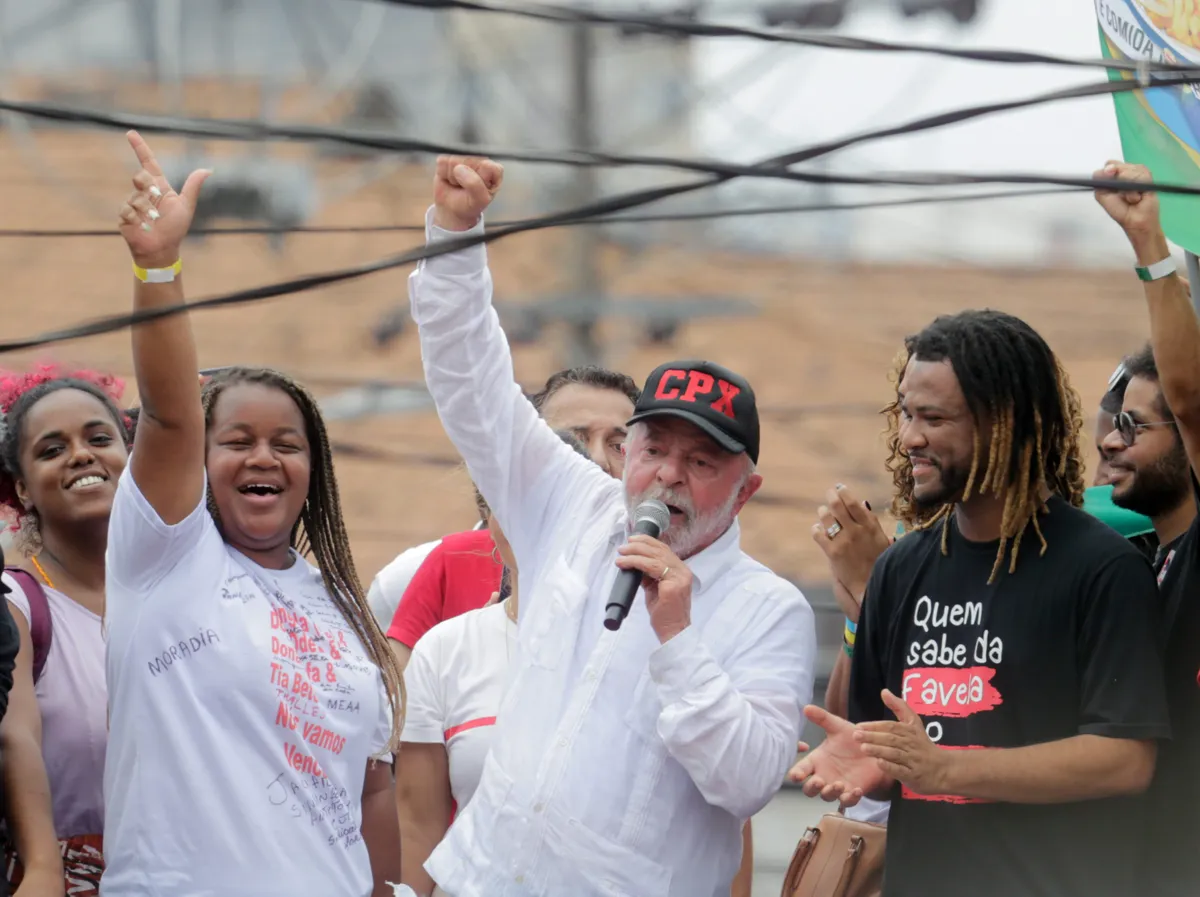
One of the journalists who tried to do something beyond the common view was reporter Tom Phillips, of The Guardian, who put together a sensitive article with photo-journalist Alan Lima about criminals’ views on the elections. Philips also developed an important article about the increasing presence of the militias in Rio de Janeiro politics.
Beyond the elections, sports and culture were also niches in which the favela was presented in the international media. The World Cup saw some articles highlighting favelas and their residents, such as this report in Al Jazeera about the Black Pearl team from a São Paulo favela and another about the soccer coach Jéssica from Complexo da Penha.
And it wasn’t just soccer. The favela was a theme even in badminton in 2022. A report by AFP about athlete Ygor Coelho tells the story of neglect he experienced while growing up. Despite a stereotypical opening to the article that alludes to how Coelho “grew up avoiding bullets,” the report introduces this promising talent from the favela and from national sports.
In the cultural sphere there were at least three articles in major foreign newspapers—such as the New York Times and Financial Times—which talked about Brazilian artists from favelas: Maxwell Alexandre, Antonio Tarsis and Jota.
Education and Science in the Favelas
The difficulties experienced in favelas such as school flight and lack of representation are assumed in the international media analyses about education and science in these areas. While the enrollment of young favela residents in universities breaks down one of the many barriers of social inequality, conversely numerous difficulties are revealed. Nevertheless, there are some examples of scientific-educational initiatives that show the favelas of Rio in a positive light, based on a network of complex solutions and not through the problems. The New Scientist article by Fabian Federl which talks about the Heroes Against Dengue project in Complexo da Maré and other areas is one of these which merits highlighting.
Favelas on Social Media in 2022
Finally, it’s also worth pointing out some content which is not from traditional media outlets, but whose reach and impact on the perception of favelas is important for its influence, especially among young people, and the power of shaping views.
On YouTube, there was a reasonable presence of more foreigners making videos in favelas, especially in this year when tourism has returned. Generally, travel or backpacking channels end up exacerbating negative stereotypes of the Rio favelas such as in the video “Caught in a Shootout in a Rio Favela” and “I Infiltrated Brazil’s Most Dangerous Favela.”
On TikTok, however, one English-language content creator drew quite a bit of attention for covering the favelas in a respectful, realistic, and sensitive way. The tagline for Joris Explains—the title of French-British communicator Joris Lochene’s channel—is “making the implicit explicit.” All his TikTok videos in Rio are noteworthy for how to create content which explains, sensitizes, and contextualizes the city beyond the common view. In this video, he asks, “Is it scary for a gringo to walk around a favela? Well, it depends. Are you a white, middle-class man who’s been socialized to feel at home wherever you go, or have you ever been marginalized in your life?”
@joris_explains Does it feel scary to walk around in a favela? I don’t wanna romanticise Rio tho: This video is only about whether it FEELS scary to me, but In the next video I’ll address whether Rio is actually safe or not. #rio #riodejaneiro #brazil #brasil #favela #rocinha #gringo #travel #traveltiltok #sociology #positionality ♬ original sound – Joris_explains
*The Sustainable Favela Network (SFN) and RioOnWatch are both projects of Catalytic Communities (CatComm). Vale Encantado’s bio-system and media outreach efforts were supported by CatComm donors.
